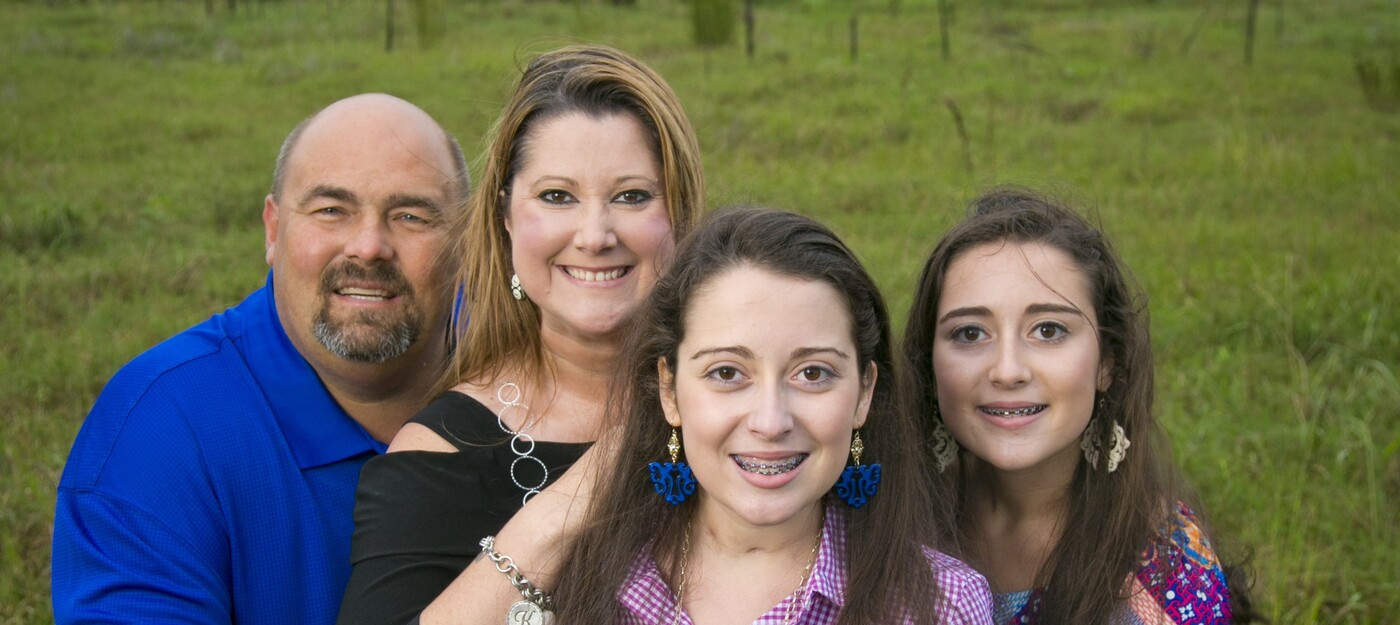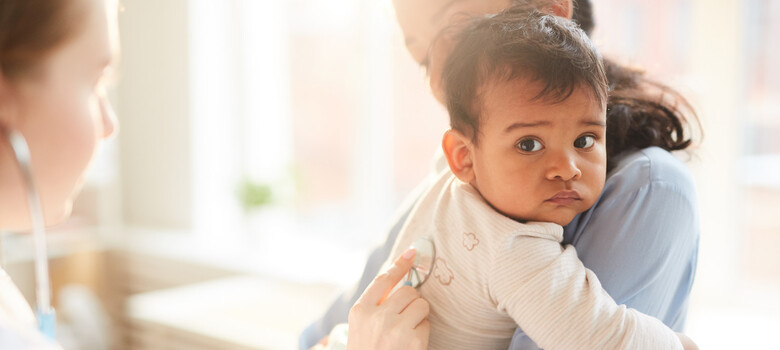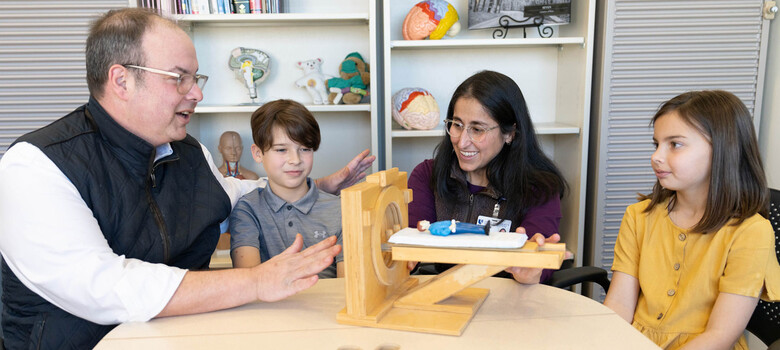 From the DukeHealth.org archives. Content may be out of date.
From the DukeHealth.org archives. Content may be out of date.
Duke’s ECMO Program Saves Young Girl's Life
Renowned Program Recently Treated 1000th Patient

Lindsey Tew and her family
As a young girl fought for her life, a life-saving technology called ECMO allowed her lungs to rest and recover.
The Race Begins
Lindsey Tew was having fun at her middle school Valentine’s Day in 2015 when her throat started to feel scratchy. She was treated for strep the next day.
The following Monday morning, though, she had fever, confusion, and severe chest congestion. Her mother, Kacey Register, drove Lindsey, still in her flannel pajamas and clutching her stuffed bear, to her pediatrician in Sampson County. “I remember stopping at a stop light on the way,” Lindsey said. “That’s pretty much the last thing I remember.”
Her lungs were full of fluid, her blood oxygen was critically low, and she was having serious trouble breathing. The pediatrician’s staff rushed her to nearby Betsy Johnson Hospital, where she was intubated to try to get air into her failing lungs and swiftly put into another ambulance -- racing an approaching winter storm --to better-equipped Wake Med in Raleigh.
By late afternoon, Kacey and her husband Dax were listening in shock as doctors told them that their daughter—who just days before had been a perfectly healthy teenager, the “flyer” on her school’s cheerleading team—had been struck by a devastating combination of influenza, pneumonia, and a MRSA staph infection.

If they could get her to Duke and put her on ECMO, her odds would improve to 65 percent.
The Longest Night of Mom's Life
A life-saving technology, ECMO is shorthand for the extracorporeal membrane oxygenation system, which essentially bypasses the lungs, allowing them to rest and recover; it draws blood, oxygenates it, and returns it to the body. Duke’s renowned ECMO program, now in its 25th year, treated its 1,000th patient in August 2015.
“ECMO does not fix anything,” said Dr. Ira Cheifetz, MD, a pediatric critical care medicine specialist, who directs the ECMO program. “It’s a ‘bridge.' Most of the time it is a bridge to recovery. This life-saving technology allows time for a patient’s lungs to recover.”
Lindsey needed Duke’s ECMO in a hurry, but by cruel coincidence, the snowstorm had brought Duke’s Life Flight medical transport unit to a halt. Cheifetz, by phone, talked Wake Med physicians through the process of maintaining a patient on ECMO support, and the Wake Med staff fought to keep her alive through the night.
“That,” said Kacey Register, “was the longest night of my life.”

“They gave her a 15 percent chance of survival. Her only real chance was to get to Duke." Lindsey's mom, Kacey Register
Chance of Survival Slim Without ECMO
Life Flight was cleared to go the next day, and Cheifetz joined the team making the trip to Raleigh to pick Lindsey up. He knew her chance of survival was slim without ECMO support.
The team hooked Lindsey up to their ECMO machine and rushed her back to Duke, but she was still far from out of the woods. Lindsey’s lungs were bleeding, making it too dangerous to administer the anticoagulant heparin, which is always given to ECMO patients to prevent dangerous blood clots.
Dr. Caroline Ozment, MD, a pediatric critical care specialist at Duke, was part of the team caring for Lindsey. “A blood clot that traveled to the brain could have meant a stroke,” she said. “Because of this risk, I was very worried that she would have to come off ECMO before her lungs were ready.”
ECMO Gave Her the Time She Needed
Lindsey’s doctors tried to help her parents prepare for what may lay ahead. “At one point, Dr. Ira told us her lungs may be too badly damaged to heal,” recalled Dax Register. “He said, ‘We’re not giving up, but you should know we are looking at a double lung transplant.’”
But after three and a half weeks, Lindsey turned the corner. Duke’s doctors eased her back toward health, and ECMO bought her the time she needed. On March 19, 2016, after four and a half weeks on ECMO, Lindsey was taken off the machine. It was the day before her 15th birthday.
She spent another two months in the hospital before she finally got to go home, but she got there in time to join her twin sister Haley at the school prom. She was able to start the fall semester at Midway High School, where she’s a freshman and a cheerleader. She can’t do quite everything she used to do—no flying, for example—and she has to be especially careful during flu season. But she’s back at home, sleeping in her own bed.
An Amazing Young Woman
Lindsey’s family almost lost her last winter, but Duke pediatric specialists and the ECMO program brought her back—and Lindsey’s own inner strength played an important role, too. “At Lindsey’s last follow up at Duke they told her she was free to do anything! She could fly in an airplane, hold her breath under water, jump on a trampoline,” said Kacey.
“When you consider everything—how sick she was, the snowstorm that kept us from getting to her, the fact that we couldn’t give her anticoagulants, and the length of time she had to stay on ECMO—it is remarkable that she has recovered so beautifully,” said Cheifetz. “She’s an amazing young woman.”



